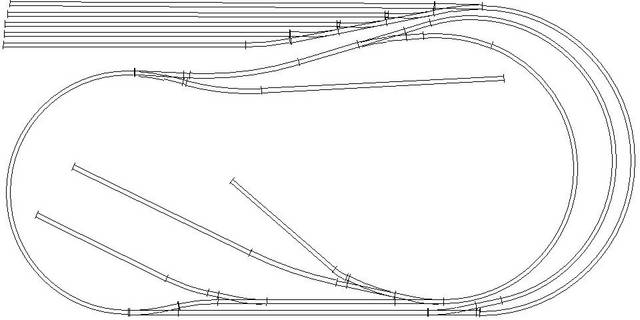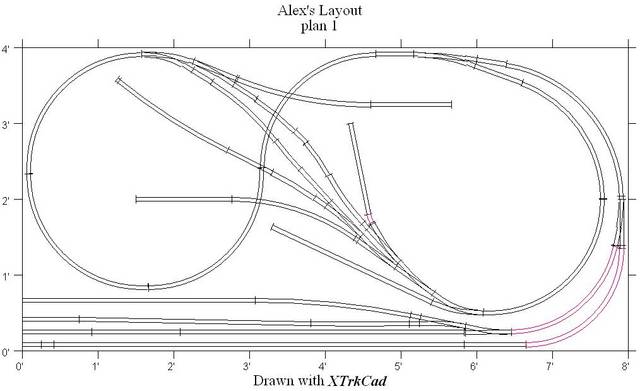I am a proponent of table-top layouts, too. But as Galen points out, getting beyond an expanded train set running around in circles is not easy.
Another drawback to many of the published 4x8 layout plans is the inability to be built as drawn. Even after one accepts that some turnouts and crossings are going to have to be handlaid for the track to fit, many of the published plans "cheat" on horizontal, vertical, and scenic clearances. Some of the most esteemed track planners (examples from John Armstrong and Iain Rice come to mind) are guilty of this. The vertical clearance issues are show stoppers - on a 4x8 where there is not at least 3.5 inches difference in elevation where the tracks cross over one another, there is not enough room to increase the clearance and still keep the grade reasonable.
And running track to within 1" of the table edge is hardly a good practice, either.
My final issue with many published 4x8 plans is putting industrial spurs on grades. If the turnout to a spur is on a grade, where does one leave the rest of the train while the spur is being switched? The grade on a spur can be addressed with the old hair brush bristle glued vertically trick, but the main line cannot.
My rules of thumb for a table-top track plan are:
- track at least 2" from table edges
- 3.5" minimum vertical elevation difference between tracks crossing over one another
- maximum 4% grade except under special circumstances
- no turnouts where switching operations will occur on grades.
- minimum 2" parallel track separation on straight, 2.5" or more on curves
- 1" of radius will go to curve easements, and 4" of straight. If one uses 18" radius curves, plan for 19" radius, with 4" of straight at end of each curve for easements
- parallel tracks at different elevations must have distance between the tracks equal to 2" plus the difference in elevations. Otherwise, retaining walls must be used between the tracks
Other constraints that come from the sharp curves and size of layout (again, my rules of thumb):
- normal longest train is no longer than the length of table side minus 2 times the curve radius plus 2 inches. An example is a 4x8 with 18" curves. Longest train would be 96"-36"-4"=56" or less. Passing tracks will often force shorter. Double track will permit longer trains, but they still look out of place.
- rolling stock and locomotives must be shorter than 1/2 the radius, with 1/3 the radius preferred. In HO with 18" radius curves, this means nothing longer than 66 scale ft, with 40 scale ft maximum preferred.
In HO, these are huge limitations on rolling stock and locomotives - era, size, type, prototype, and quantity all become important decisions. Thinking small - earlier era, branch line, or short line prototype, no post-1910 passenger equipment, no 6 axle diesels, no steam bigger than 2-8-0, and 7 or fewer cars/train are realities for realism.
Rosters really need to be planned well - 3 locomotives and around 20 cars are all a 4x8 need or should have. The locomotives should fit the era and service they are performing. Cars should be an appropriate mix of home and foreign roads, and types to fit industries served on and off the layout.
The biggest improvement to a 4x8 or similar is add a rectangular extension (2ft x 4ft to 2ft x 8ft). These, if designed well, add immeasurably to the operational capabilities of a 4x8. Two extensions, each containing a terminal of some kind, and linked by the 4x8, is ideal. Using a hidden-from-view passing siding as staging is a very effective operations multiplier, too.
The Atlas HO-33 (Plywood Summit Lines) is a buildable plan for a 4x8 without extensions. It's one of my favorites.
my thoughts, your choices



